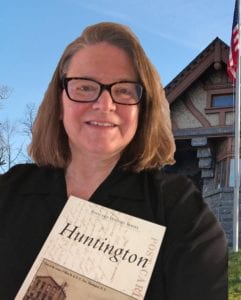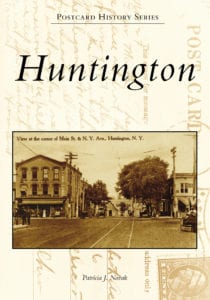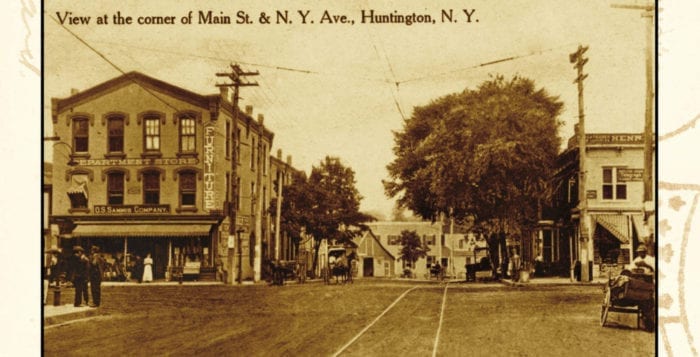Reviewed by Victoria Espinoza

With Patricia J. Novak’s new book, you don’t need a time machine to see what the Town of Huntington was like 100 years ago.
Broken into seven chapters, “Huntington,” part of the Arcadia Publishing’s Postcard History Series, looks through the lens at old postcards to get glimpses of what life in Huntington was like back in the day.
![]() “I have been collecting postcards of the towns/hamlets in Huntington township since the 1980s,” said Novak in a recent interview, adding “Before the internet (and eBay), I acquired them by visiting postcard shows and by mail. Dealers would send me their cards for review and I would pick what I wanted. I would return the ones I didn’t want and include a check for the keepers. When Arcadia Publishing introduced their new Postcard History Series, I knew I had a book!”
“I have been collecting postcards of the towns/hamlets in Huntington township since the 1980s,” said Novak in a recent interview, adding “Before the internet (and eBay), I acquired them by visiting postcard shows and by mail. Dealers would send me their cards for review and I would pick what I wanted. I would return the ones I didn’t want and include a check for the keepers. When Arcadia Publishing introduced their new Postcard History Series, I knew I had a book!”
Novak, who grew up in Huntington, organized her book by different parts of the community. The various chapters, which feature over 220 black-and-white images, span religious structures, schools, businesses and scenes of residents from years past enjoying their lives in the North Shore town.
The first chapter starts off with a very familiar site, Huntington Town Hall. Initially used as a high school for Huntington students starting in 1910, it eventually changed hands to become the center of government.
Other school buildings in Huntington and Northport are featured in this chapter as well, along with old mailers detailing and encouraging residents to support school expansion projects due to a population increase in the area after World War II. It’s quite interesting to read a message from Huntington’s school board in 1954 and see the similarities in budget pitches with school boards currently in power.
Aside from school buildings, the first chapter also shows churches in the area, some that look almost identical now as they first did in the early 20th century and some that are no longer standing.

Another chapter gives readers a glimpse into the lives of the residents that came before them. Familiar structures like William K. Vanderbilt II’s mansion, Eagles Nest, in Centerport and the Huntington Country Club can be seen in their early starts, but you can also learn about impressive establishments like the Camp Christian Endeavour, located close to where the Huntington train station now stands. This organization worked to provide an opportunity for disadvantaged city boys and girls to enjoy outdoor recreation, three meals, clean surroundings and fresh air for 10 days every summer. Photos show children swinging and enjoying the Huntington scenery.
Perhaps the most fun aspect of a book like this is comparing the old photos to what everything looks like now, including the chapter that shows the business establishments of the past featured in several postcards.
Novak said her favorite postcards are ones that tell the greatest stories.“The real-photo postcards are exciting, but any postcard that has writing on it which gives us some insight on events and daily life from that time period are particularly interesting to me.”
And although she was not phased with the wealth of information she had to work from, Novak said she was surprised with some of the personal stories she got to learn.
“I did extensive research on many of the individuals that I ‘met’ along the way,” she said. “The contributions they made to the social and economic progress of Huntington during the early 1900s should not be overlooked. I even went to visit their graves.”
As for why she thinks people should be interested in learning more about Huntington’s past, Novak said this town has no shortage of fascinating stories.
“Huntington has a rich history dating back to the 1600s,” she said. “It is a perfect, and well-documented microcosm of how communities grew from European settlements to our modern footprints today.”
A lifelong resident of the Town of Huntington, author Patricia J. Novak is a librarian and archivist at the South Huntington Public Library and a member of the Huntington Historical Society. “Huntington” is available online at www.arcadiapublishing.com, Amazon and Barnes & Noble.





